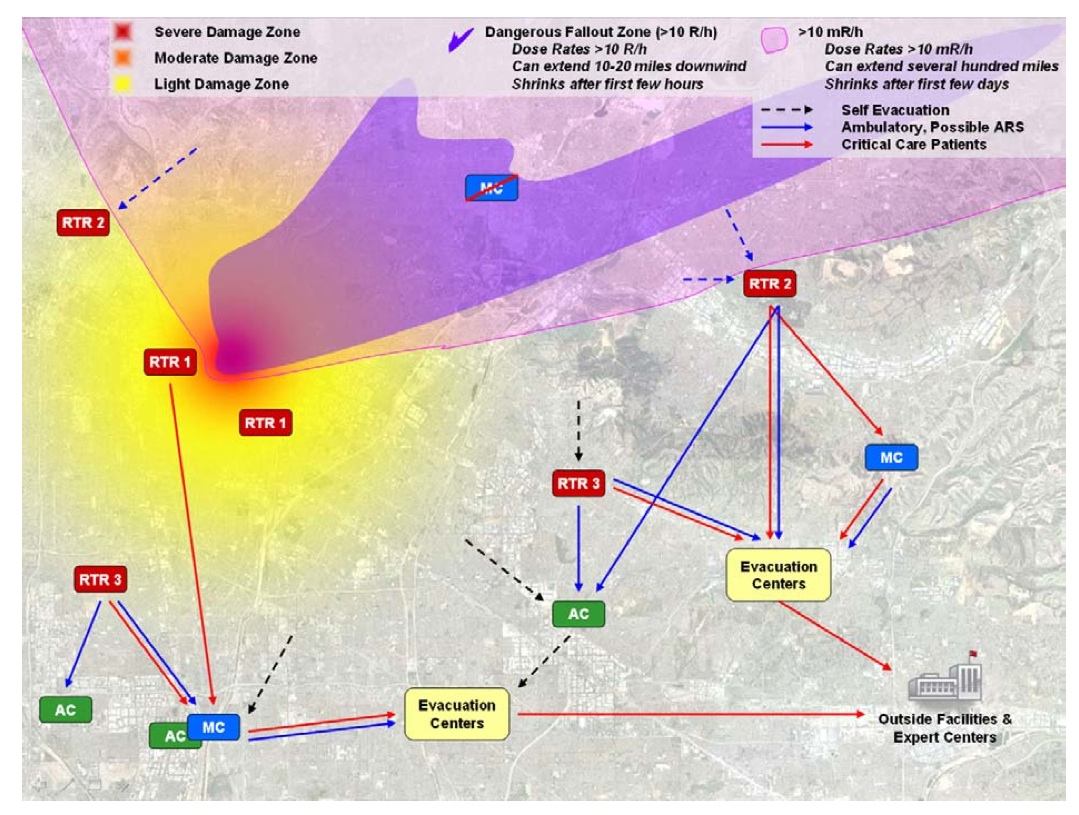 One thing quickly becomes clear, reading the 135-page “Planning Guidance for Response to a Nuclear Detonation” (second edition) by the US Department of Homeland Security.
One thing quickly becomes clear, reading the 135-page “Planning Guidance for Response to a Nuclear Detonation” (second edition) by the US Department of Homeland Security.
“There will be no significant Federal response at the scene for 24 hours and the full extent of Federal assets will not be available for several days,” the report says. “Emergency response is principally a local function.”
In other words, a $40 billion federal department has decided that, in the event of a nuclear explosion in an American city, the initial response will be up to the local city council. Never mind that City Hall has, presumably, been completely vaporized, along with the municipal fire department.
Though generally jargon-filled and euphemistic in the extreme—”fatality management”?—the report has accidental bits of evocative language:
Responders will begin to consistently see broken windows more than 3 miles (4.8 km) from ground zero. The [low damage] zone will require some street clearing of small rubble and debris (e.g., shutters, gutters, mail boxes, power lines, glass, and rubbish) and stalled or crashed vehicles. Passage deeper into this zone will become increasingly difficult and require heavy equipment and debris removal capabilities.
Who do the feds expect to supply that heavy equipment, and remove all that irradiated debris? For-hire “debris contractors”—of course!
While the planners do assume a nuclear bomb destroying a US city would inspire the “pro-social, altruistic behaviors that occur in most disaster situations,” it seems they’ve also anticipated that the people hauling away the charred corpses of their countrymen will expect a payday:
Also, the development of a response plan that depends on contracted services will need to clarify what contractors can and cannot do [sic]. A clear understanding of the contractors’ capabilities will allow for a better understanding of what a true response time will be following a disaster.
Nice.
If the federal government’s seemingly laissez-faire notions of “emergency management,” fail to reassure you, there is, fortunately, another way: Equity shares in these fine 2012 survival bunkers start at $50,000 per adult and $25,000 per child.
